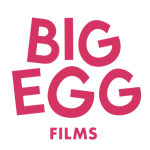When you make films with young people about topics like suicide, racism, or addiction, there’s no room for carelessness. The stakes are real. Behind every camera is a person trusting you with their story, and sometimes, with their safety.
Adam Sheldon, Director at Big Egg Films, talks about how his team handles that responsibility. For nearly 15 years, Big Egg has worked with charities and community groups to bring lived experiences to life through film - often from people who’ve been marginalised, misrepresented, or simply unheard.
Adam’s stories range from documentaries on county lines to mental health and suicide, body dysmorphia, homelessness, and coercive relationships among young people. Heavy subjects, handled with careful hands. His first priority, he told me, isn’t the creative brief - it’s the environment.
“Before we get to the creative output,” Adam said, “the environment we create and the trust we create is absolutely paramount. That’s genuine, otherwise we can’t do it.”
Big Egg’s sets are designed as safe spaces not performative ones. That means thinking carefully about identity, consent, and consequence. A story shared on film is permanent. As Adam put it: once it’s out there, you can’t put it back in the box.
When working on projects about homelessness or exploitation, for example, showing someone’s face or voice could put them at risk. So Big Egg uses creative tools, such as animation, silhouettes, ambient voice, abstraction, to protect contributors while keeping their truth intact. Constraints like these, Adam says, often drive the best creativity.
“If someone said, ‘Here’s £20 million, make what you want,’ we’d probably get stuck. The best creative decisions come from constraints.”
That philosophy also applies to one of the hardest subjects of all - suicide. Big Egg’s approach is to acknowledge it honestly but sensitively, without feeding harmful ideas or voyeurism. It’s a fine balance between realism and responsibility, especially when your audience includes children as young as ten.
"We can focus on those it affects, make people feel seen. We can have that conversation safely.”
It’s a sharp contrast to the media world Adam left behind. After years in commercial television, he grew disillusioned by the lack of duty of care, “the bad taste you get when people’s lives are turned into entertainment.” That experience shaped the ethos of Big Egg: to use film for good.
Big Egg now gives placements and training to young people from underrepresented backgrounds, those who haven’t thrived in mainstream education, or who face barriers to creative careers. As Adam puts it, “We can’t just talk about inclusion; we’ve got to hire it.”
The company’s work with charities has also reshaped how they listen. Adam spoke about learning from Crisis Classroom, a charity that set up pop-up learning spaces in refugee camps. Their idea began not with a plan, but with observation: people were queuing. So they built classrooms in queues.
“That stuck with me,” Adam said. “We often assume we know what people need. But until we really listen, we don’t know the solution. Storytelling works the same way - it’s about listening first.”
And that’s what sets Big Egg apart. Their films aren’t just about people, they’re made with them. Every project is a collaboration that balances truth, dignity, and creative care.
In a world that rewards clickbait and spectacle, it’s rare to find filmmakers who slow down long enough to ask: should we?
Big Egg’s answer is yes - but only if it’s safe, truthful, and done for good.
If you’re a charity, school, or organisation working with sensitive subjects, or you simply want to tell real stories with care, get in touch with Big Egg Films. Their work shows that storytelling can be brave and responsible, creative and compassionate. Visit bigeggfilms.com to see how they turn complex, human stories into films that do good.






